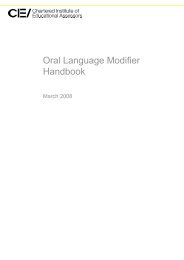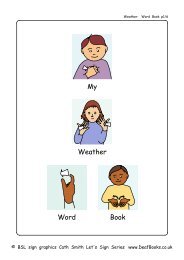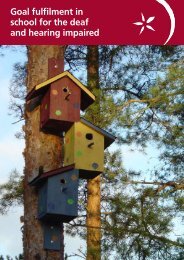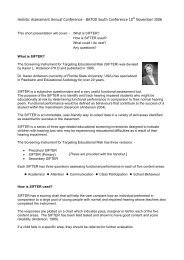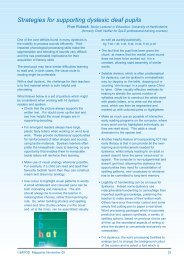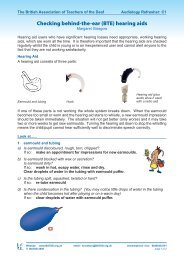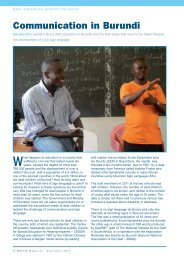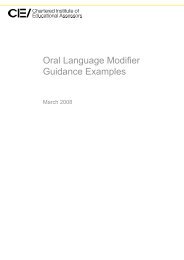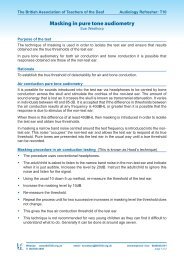Article and examples of instruction sheets - batod
Article and examples of instruction sheets - batod
Article and examples of instruction sheets - batod
You also want an ePaper? Increase the reach of your titles
YUMPU automatically turns print PDFs into web optimized ePapers that Google loves.
When are Listening Boxes used<br />
Listening Boxes are particularly useful at early stages <strong>of</strong> development, to demonstrate to<br />
parents how to work with their child on listening skills. Each Box has a specific reference to a<br />
listening stage:<br />
• auditory detection (knowing there is sound present);<br />
• auditory discrimination (knowing that there are different types <strong>of</strong> sound);<br />
• identification (knowing what the sound represents eg doorbell);<br />
• comprehension (knowing that words/sounds have meaning <strong>and</strong> acting on that).<br />
The activities are used to reinforce listening skills on a 1:1 basis whilst integrating<br />
meaningful concepts in a fun way.<br />
How are they used<br />
A simple step-by-step laminated <strong>instruction</strong> sheet is included on how to use the Listening<br />
Boxes. The specific purpose <strong>and</strong> goals for the box are on the front. From the front <strong>of</strong> the box,<br />
parents <strong>and</strong> pr<strong>of</strong>essionals can quickly <strong>and</strong> easily see the specific listening intent <strong>of</strong> each box.<br />
A box developed to encourage auditory detection may simply have 'responding to sound'<br />
<strong>and</strong> 'turn taking' as its specific goals. The box may only contain a drum <strong>and</strong> a ball with<br />
<strong>instruction</strong>s on how these may be used to develop the skill <strong>of</strong> auditory detection. The advice<br />
may include;<br />
a. banging the drum while encouraging the child to 'listen';<br />
b. s<strong>of</strong>t <strong>and</strong> loud banging;<br />
c. marching to the beat <strong>of</strong> the drum;<br />
d. playing the 'Wake Up' game - taking turns to be asleep <strong>and</strong> waking up when the<br />
drum is banged;<br />
e. throwing the ball when they hear the beat <strong>of</strong> the drum;<br />
f. playing a simple hide <strong>and</strong> seek game with the drum.<br />
A more complex Listening Box may involve developing the skills <strong>of</strong> auditory identification or<br />
comprehension, including activities in, for example, auditory selection, turn-taking, auditory<br />
memory, singing, role play <strong>and</strong> language building.<br />
A 'loan card' system ensures a record <strong>of</strong> who has borrowed the box <strong>and</strong> the date <strong>of</strong> return.<br />
Conclusion<br />
It is fun collecting items <strong>and</strong> making Listening Boxes <strong>and</strong> the production reaps rewards <strong>and</strong><br />
good feedback from both the children <strong>and</strong> their parents. The boxes are widely used <strong>and</strong> they<br />
are an invaluable tool in assisting parents in the development <strong>of</strong> their children's listening.



